June/Mammoth Loop, Couch to Couch
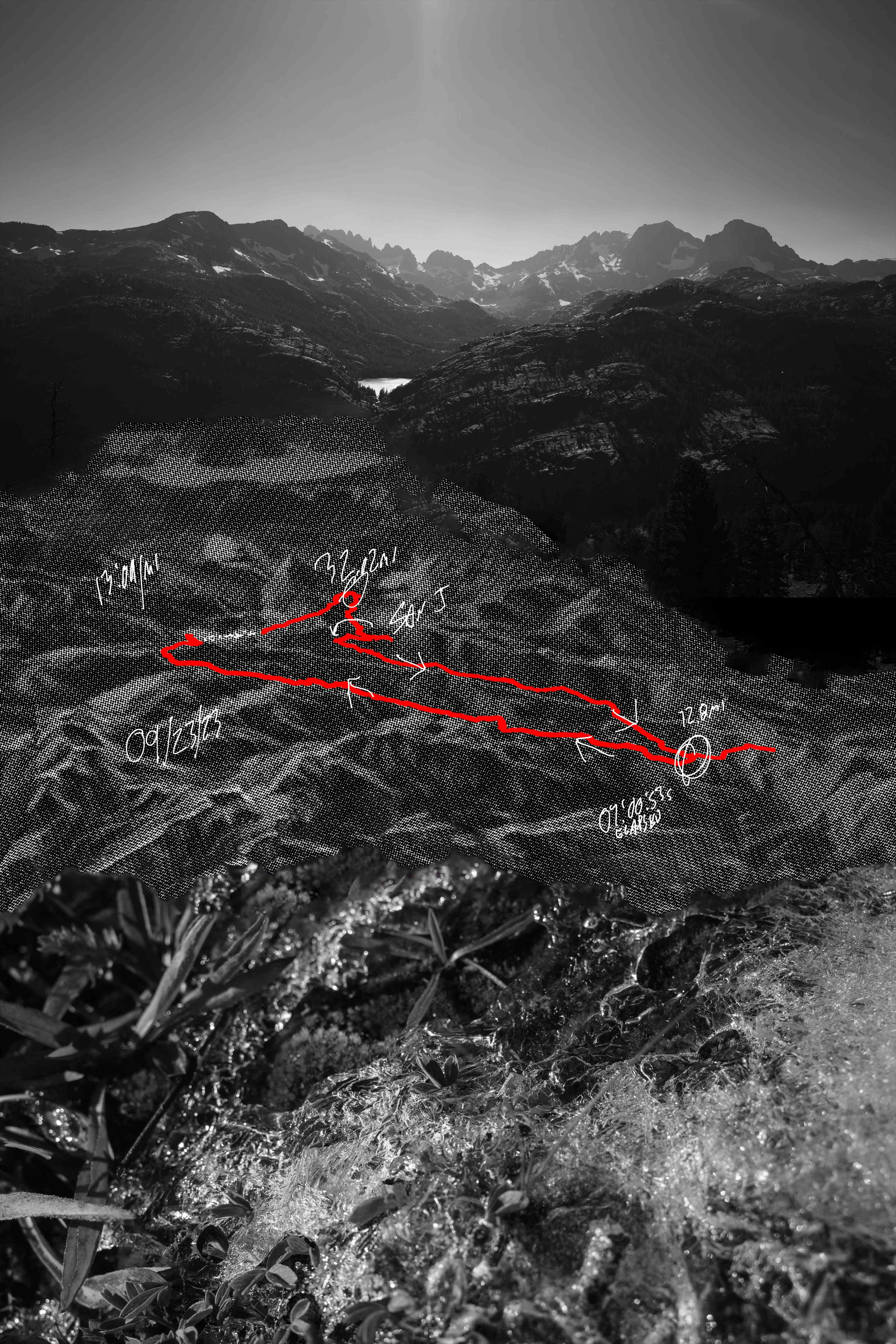
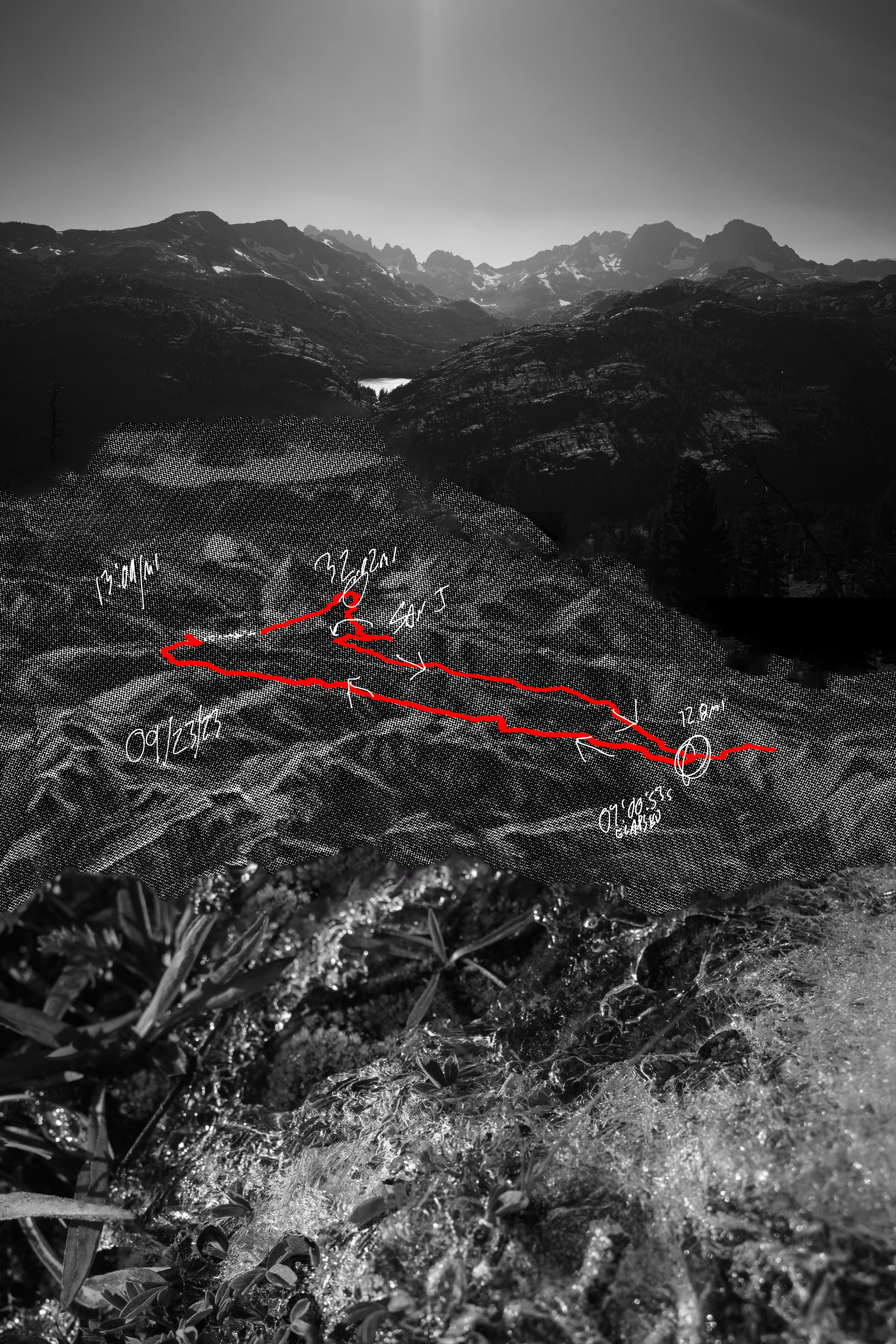


You had a simple life. But on one drive north, after a couple steep grades that seemed to stretch on forever, you arrived. Every other day or so is another big climb up a mountain pass, or traversing a bed of river stones along a gravel road. And it’s been that way for a year now.
This is a lot more than the occasional grocery run, you think.
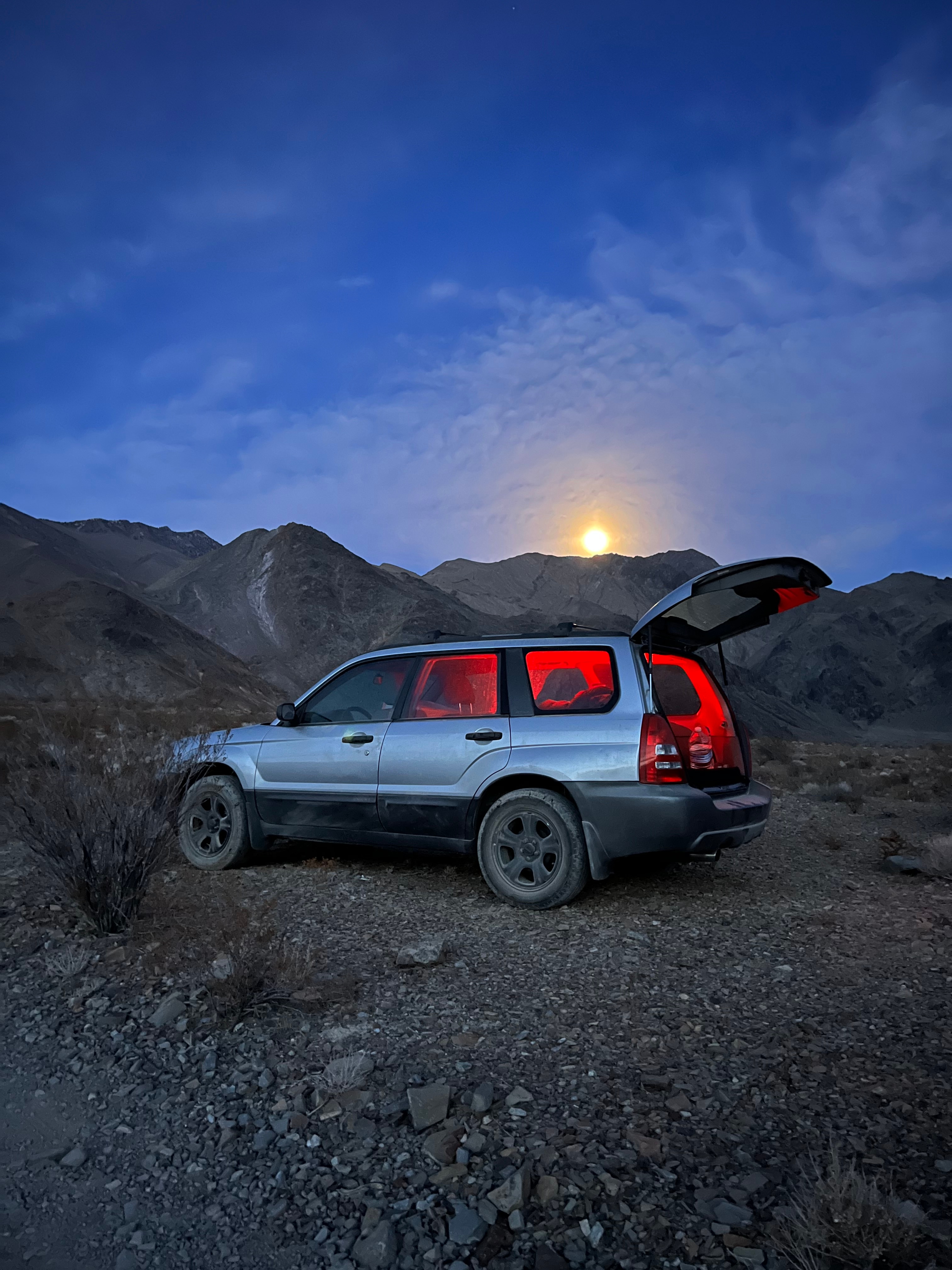
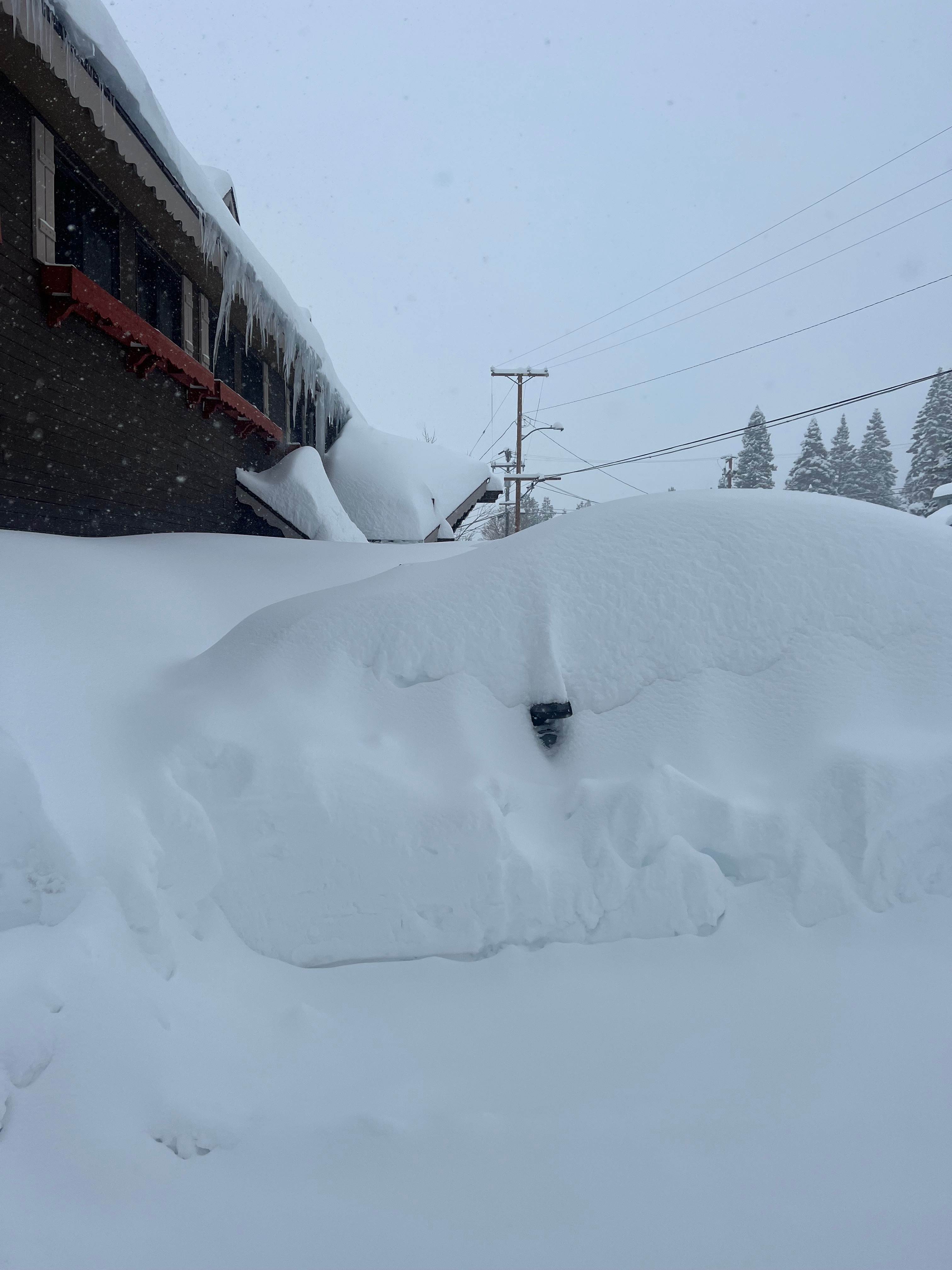
About halfway up Tioga Road’s long and steep grade, you’ve had enough. Just can’t take it. There’s a loud sound and a sudden lurch, and we’re coasting uphill just long enough to turn into a pull out.
I get it. The past year has been massive. And maybe it’s unfair I nabbed this particular car specifically to not care about it. I’m comfortable leaving it for days in the desert, or on the side of the road in winter, buried in six feet of snow, snow plow drivers warming up with whisky.
Of all the places to go out, this is it. Surrounded by alpine peaks and deep canyons. Not on the shoulder of the 405 in rush hour traffic.
I call a tow into the nearest town and the prognosis isn’t good.
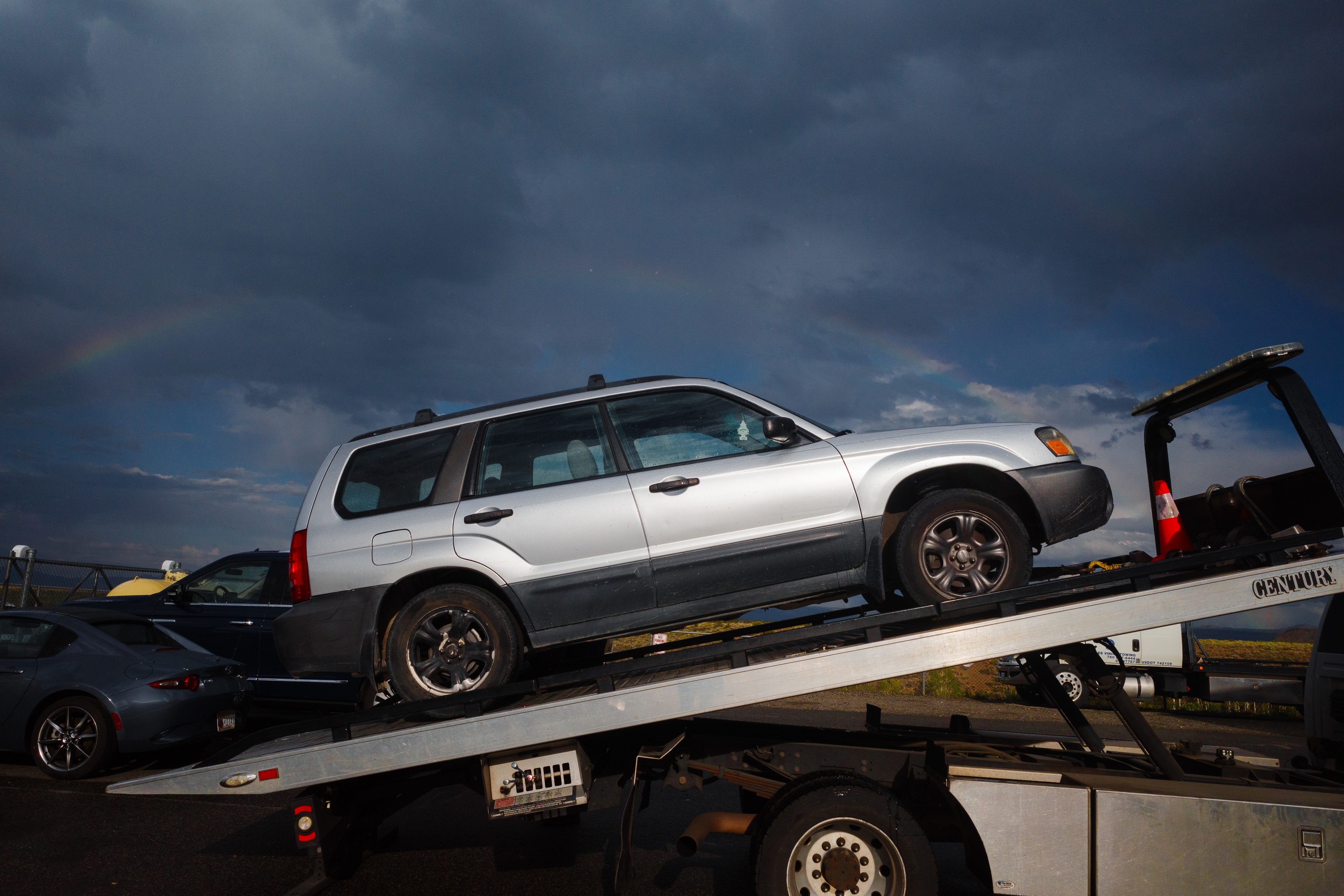
Time to drop in a new engine. Except the only guy within a hundred miles who drops engines in old Subarus is out on vacation for a couple weeks. Well deserved, I’m sure, but a small bind for me.
I’ve been registered to run the 50k ultramarathon at Mammoth Trail Fest. I don’t know anyone from June who is participating. Check in begins at 6:30am—a ride would be a big favor to ask. Then there’s getting back. Eastern Sierra Transit doesn’t run on the weekend.
This is turning into a logistical headache, and accept that participating is not going to happen.
I’ve been doing my daily run out the front door within the June Lake loop. Doesn’t matter how many times you’ve seen it. Each day is different—the season, the light, the wind. It’s hard to believe this is my backyard.
The evening before trail fest, I run to Yost Meadow. A feature catches my eye. It’s called the hourglass, the primary winter route for backcountry skiing to the top of the negatives. It’d be fun to do in the summer before the snow starts. See the contrast between seasons.
Then the spark goes off; I could run to trail fest and back.
I’m not big into the competitive aspect of racing, and find my motivation elsewhere. My first race was the Bishop 50k ultra this past spring. The highlight was seeing and cheering friends along… and eating food, obviously. Both entirely possible tomorrow.
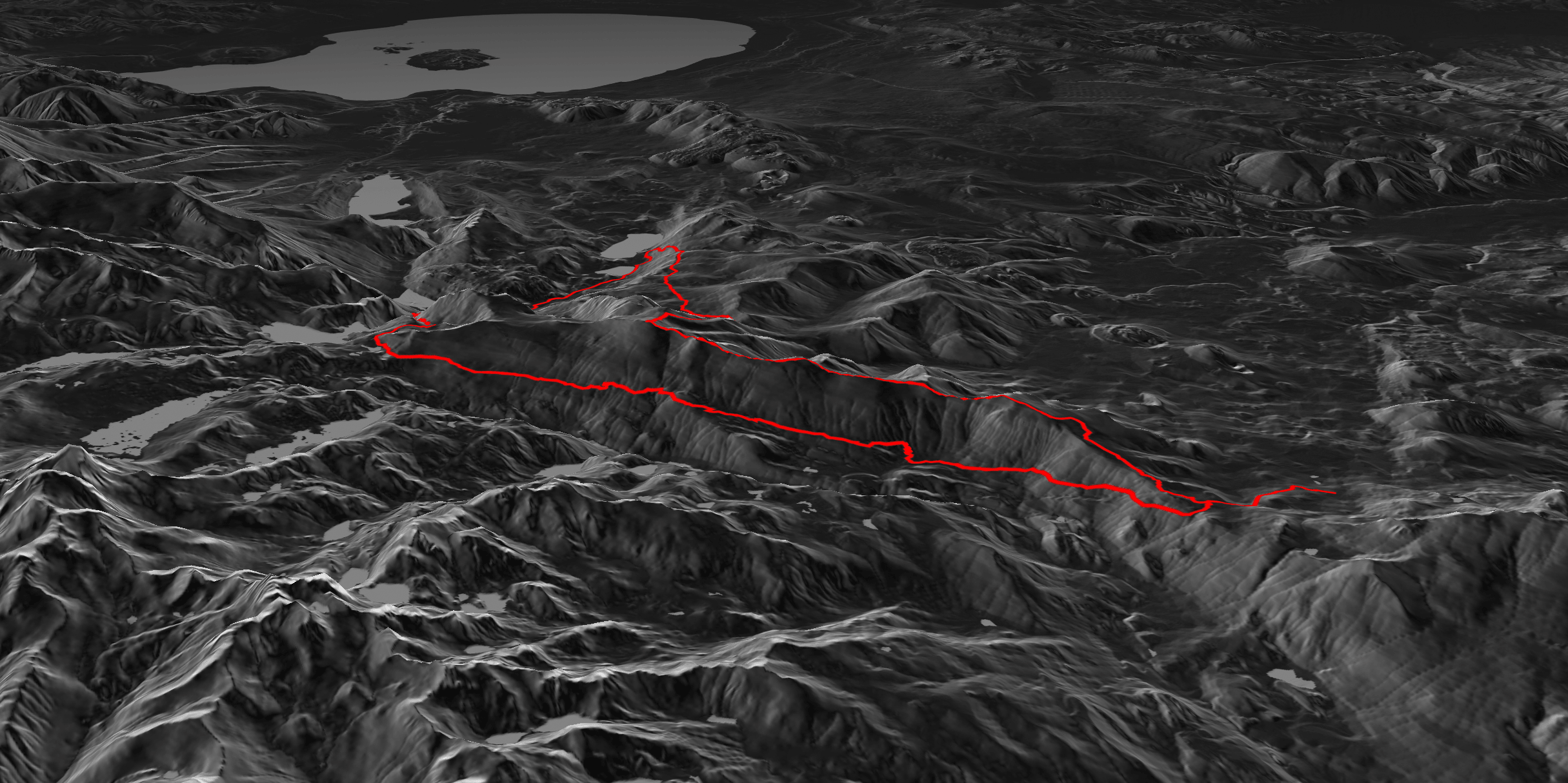
Best of all, the route shapes up to being comparable with the race. 50k (32 miles) with a touch of extra total elevation gain—8,500ft versus 7,500ft.
The alarm went off at 6:30am. The running vest was quickly packed, and then it’s off the couch and out the door. It’s cold out. Frost on windshields cold, the temperature somewhere in the upper twenties. Alpenglow has just begun bouncing off the summit of Carson Peak while beginning the climb up Fireman’s trail towards the chalet at the ski resort.
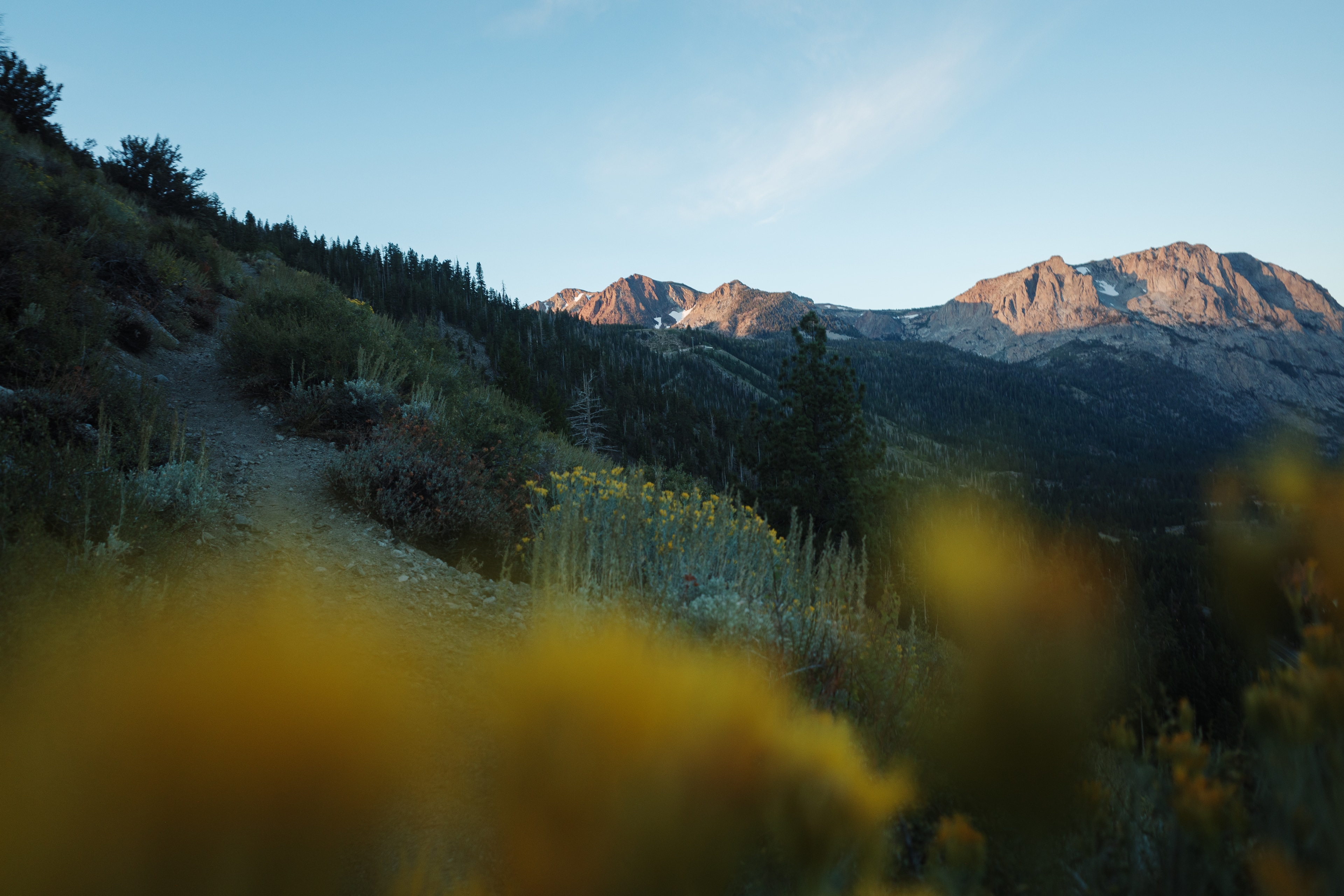
These first miles are going by slowly, having done them less than twelve hours earlier. It feels redundant. Excitement kicks in reaching Yost and beginning cross country up towards the hourglass.
A snowfield appears in the hourglass. It shouldn’t be surprising, but it is. It’d been tucked behind a ridge from my perspective. With overnight temperatures as cold as they are, I’m sure it’s slick and icey. Traversing a snowfield early in the morning wasn’t part of the plan—I have no traction or ice ax on me.
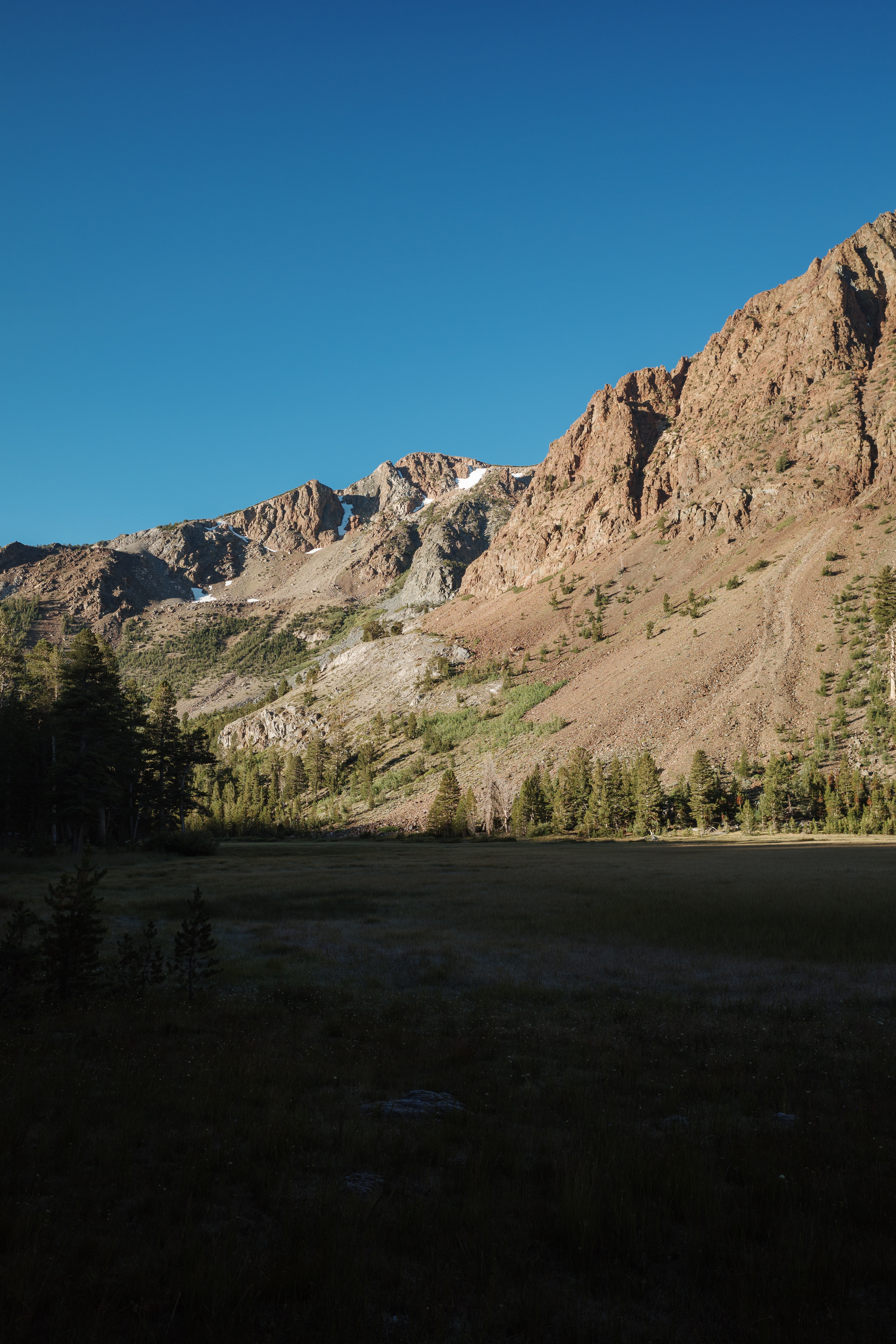
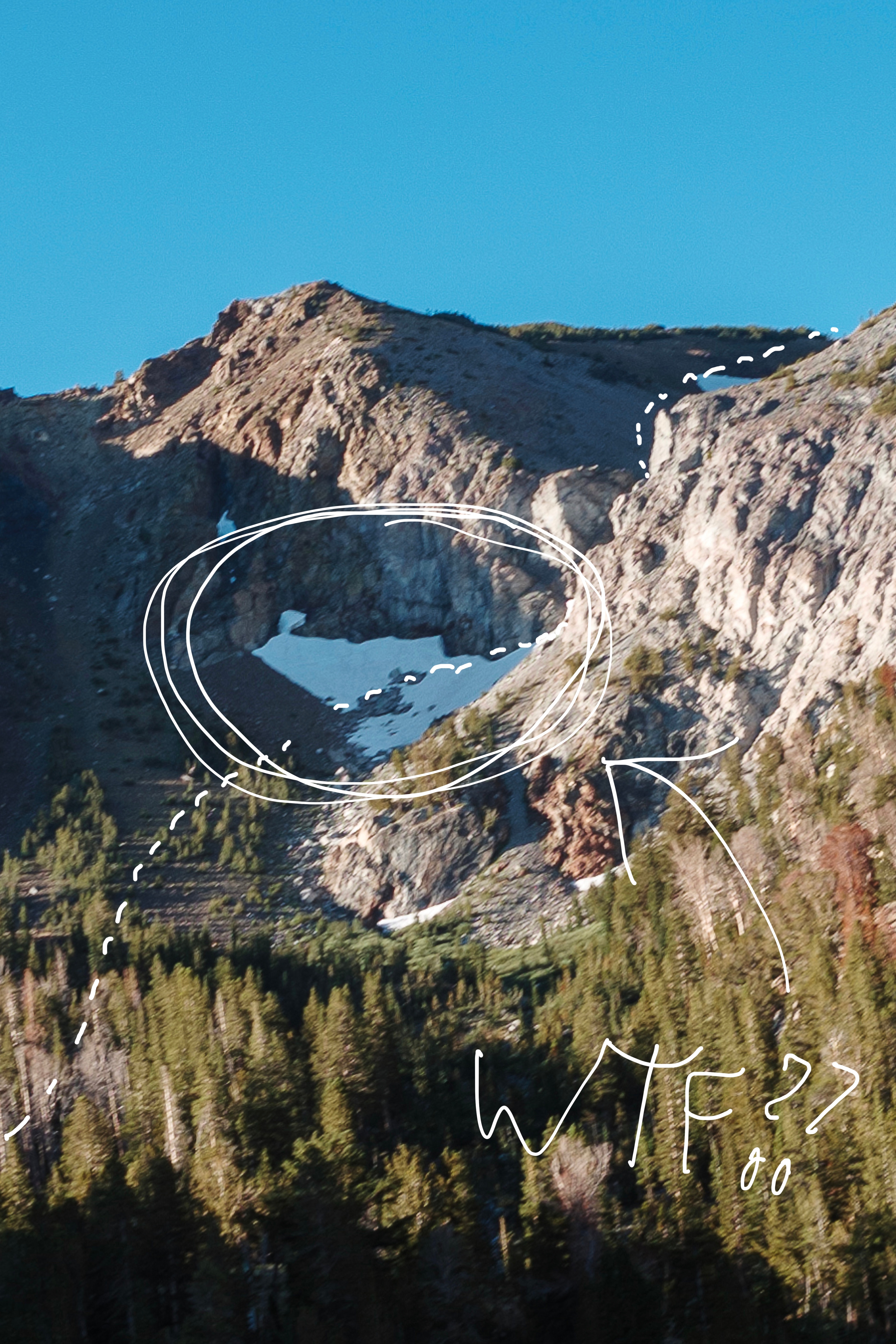
It sounds funny to hesitate about cross a few hundred feet of snow after raging this same area all winter, but short section of steep icy refreeze can be insidious specifically because it seems so mellow.
Brings to mind the R.J. Secor accident on Mt Baldy. Secor was a legend. Literally wrote the bible on the high sierra. He suffered multiple skull fractures on a peak just outside of Los Angeles when losing control of a routine glissade when hitting a slick and fast patch.1
The complacency that comes with experience is something I think about often. Heuristic traps.
Luckily for me, after making cross-country progress towards the feature it became clear the snow didn’t extend beyond the north aspects and across the entire choke point.
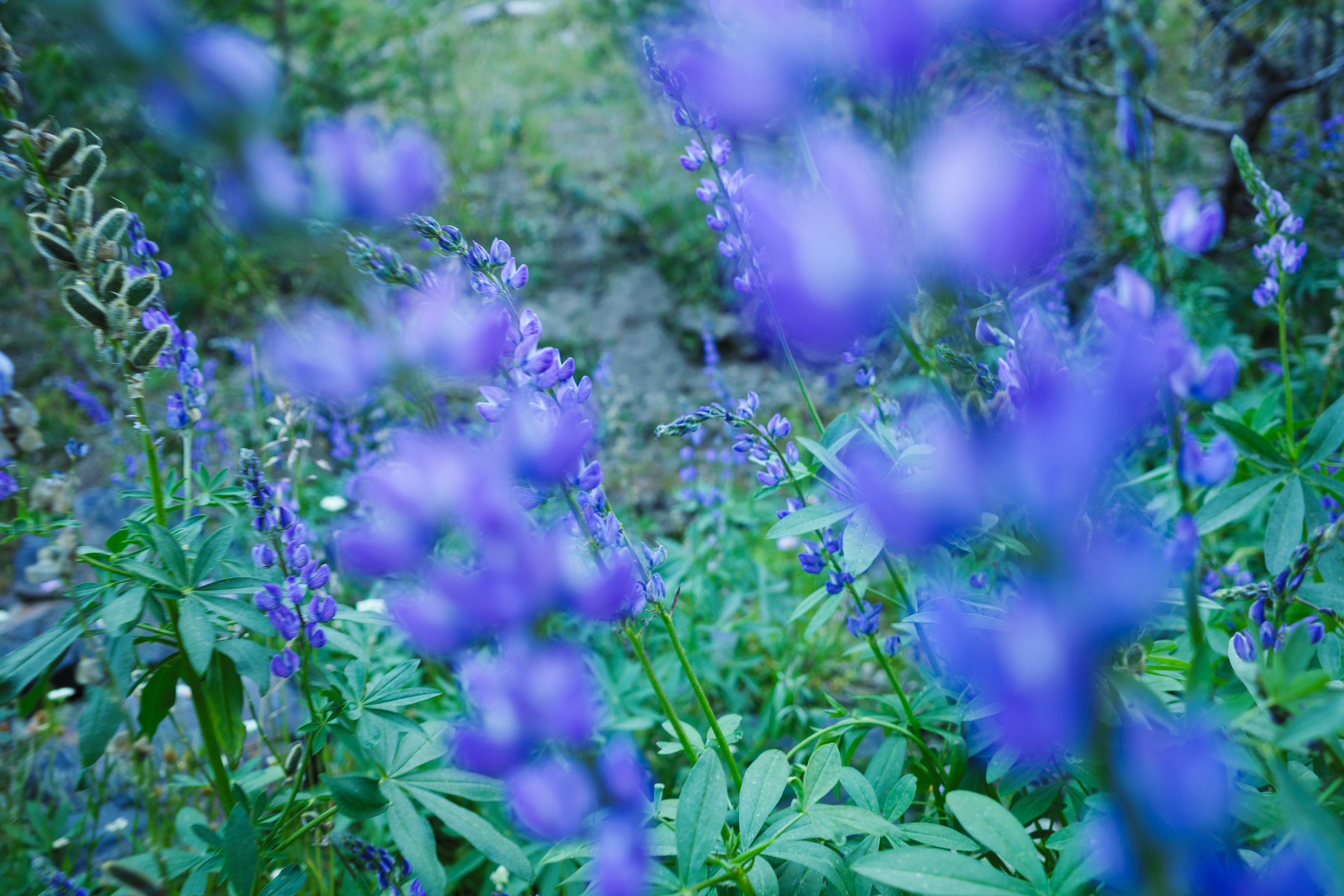
The contrast between winter and summer is seriously striking. October is around the corner, and Yost Creek is blanketed with thousands of blooming purple Lupine and towering Jeffrey pine. Just a few months ago this was a uniformly smooth surface of snow.
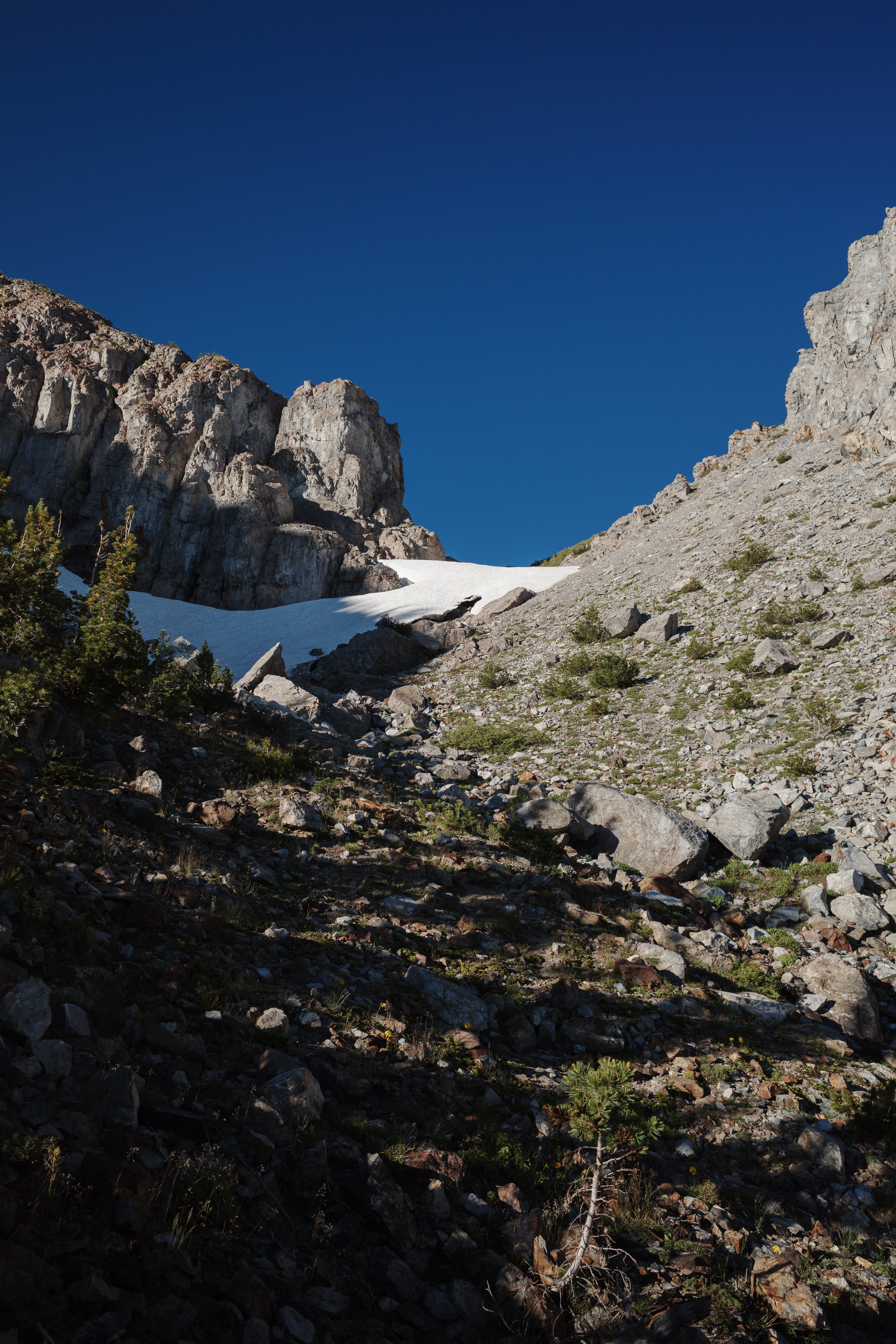
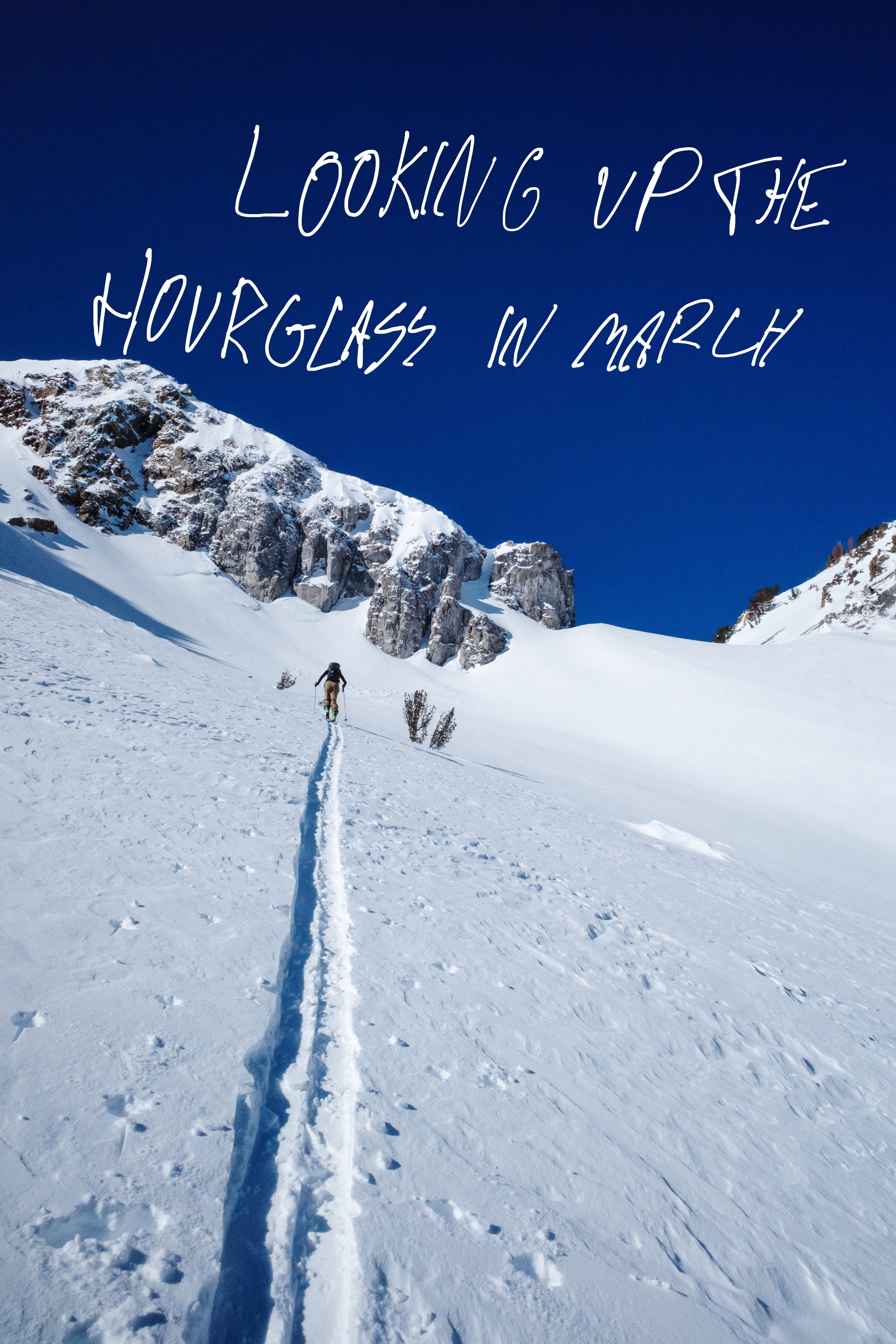
The snow makes the climb a breeze on skis or kicking steps. Beneath all the white of winter is loose scree of volcanic pumice in the summer. Each step up you, slide back down at least half a stride.
Cresting the rollover, I’m surprised how many trees there are! Comparing the photos, it becomes clear how wind loading affects corridors like this. A bald patch of ground is visible to the right, while entire trees are buried on the leeward side of the ridge.
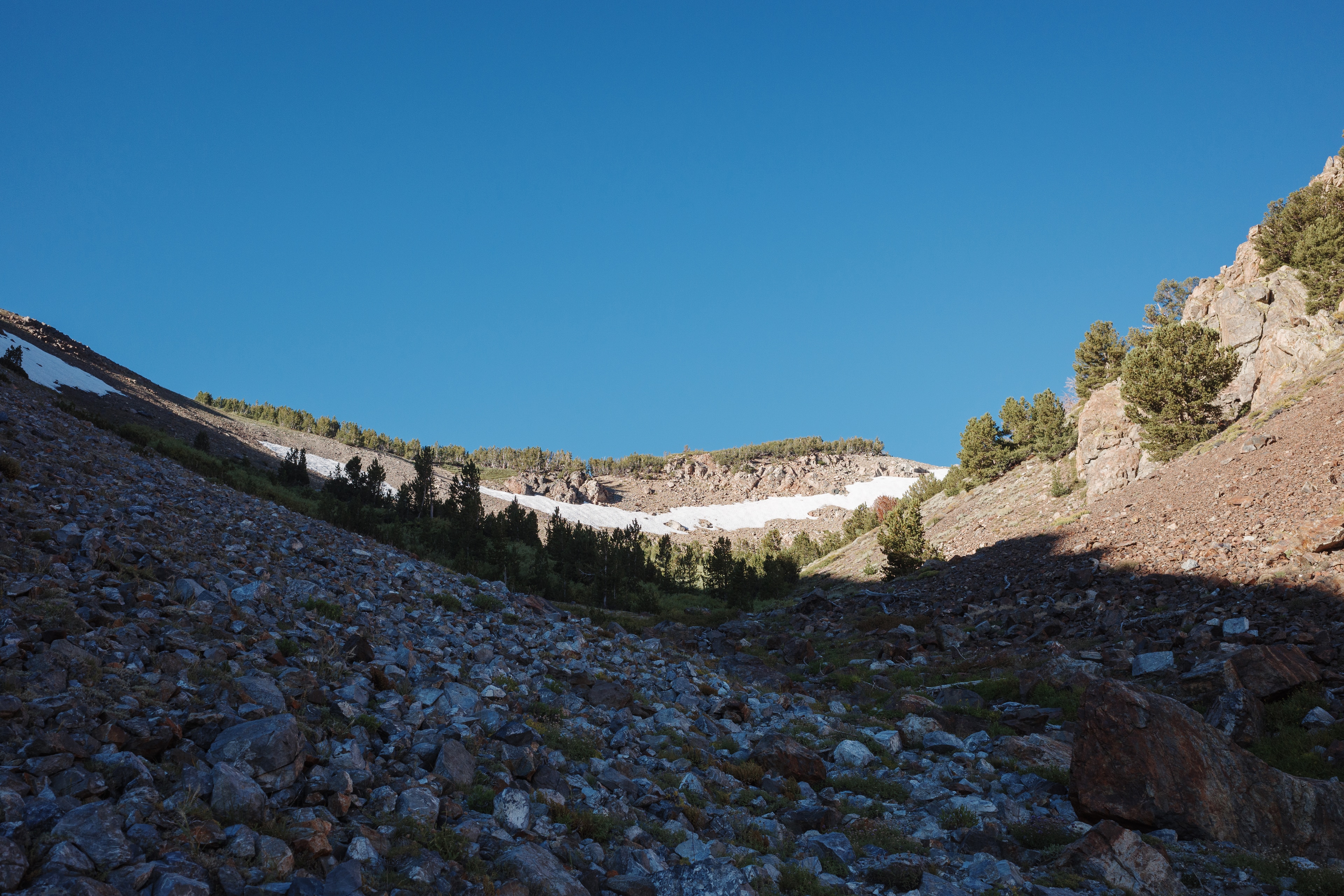
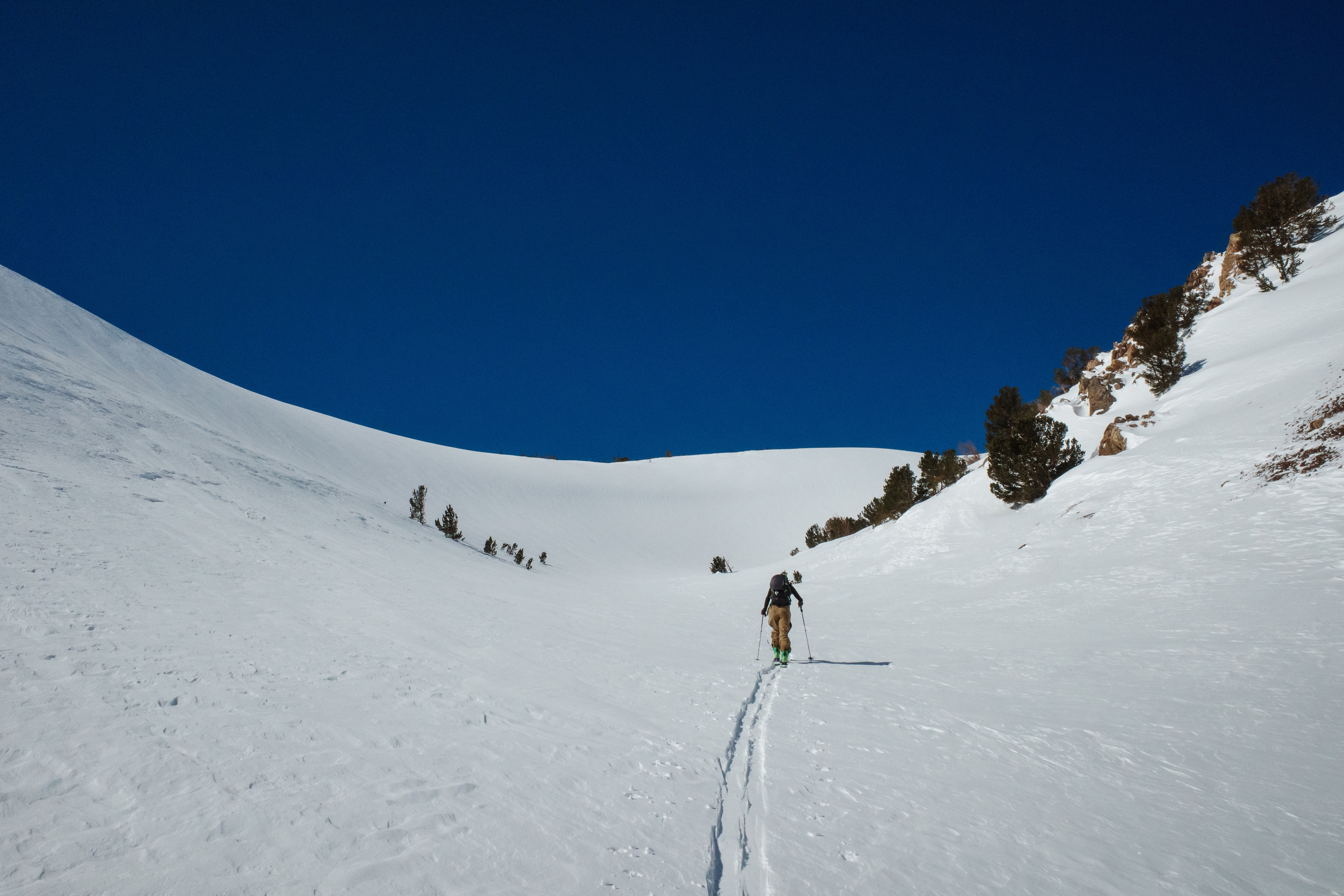
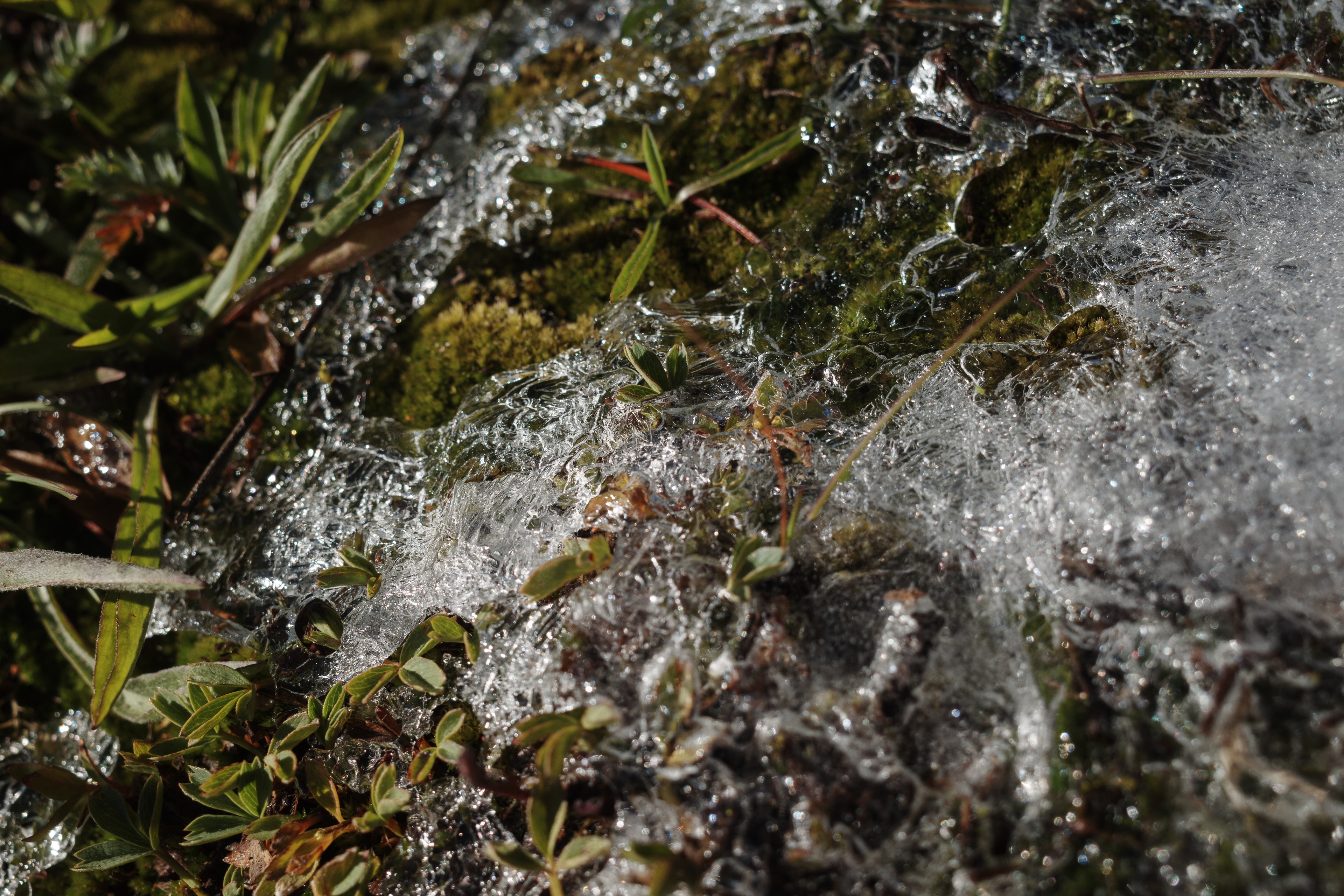
This moment is a seasonal transition point. It’s mixed up. On the approach to San Joaquin a healthy stream continues to flow. At this early morning hour sheets of ice form, locking in blooming wildflowers and covering bright green moss.
Extreme contrast.
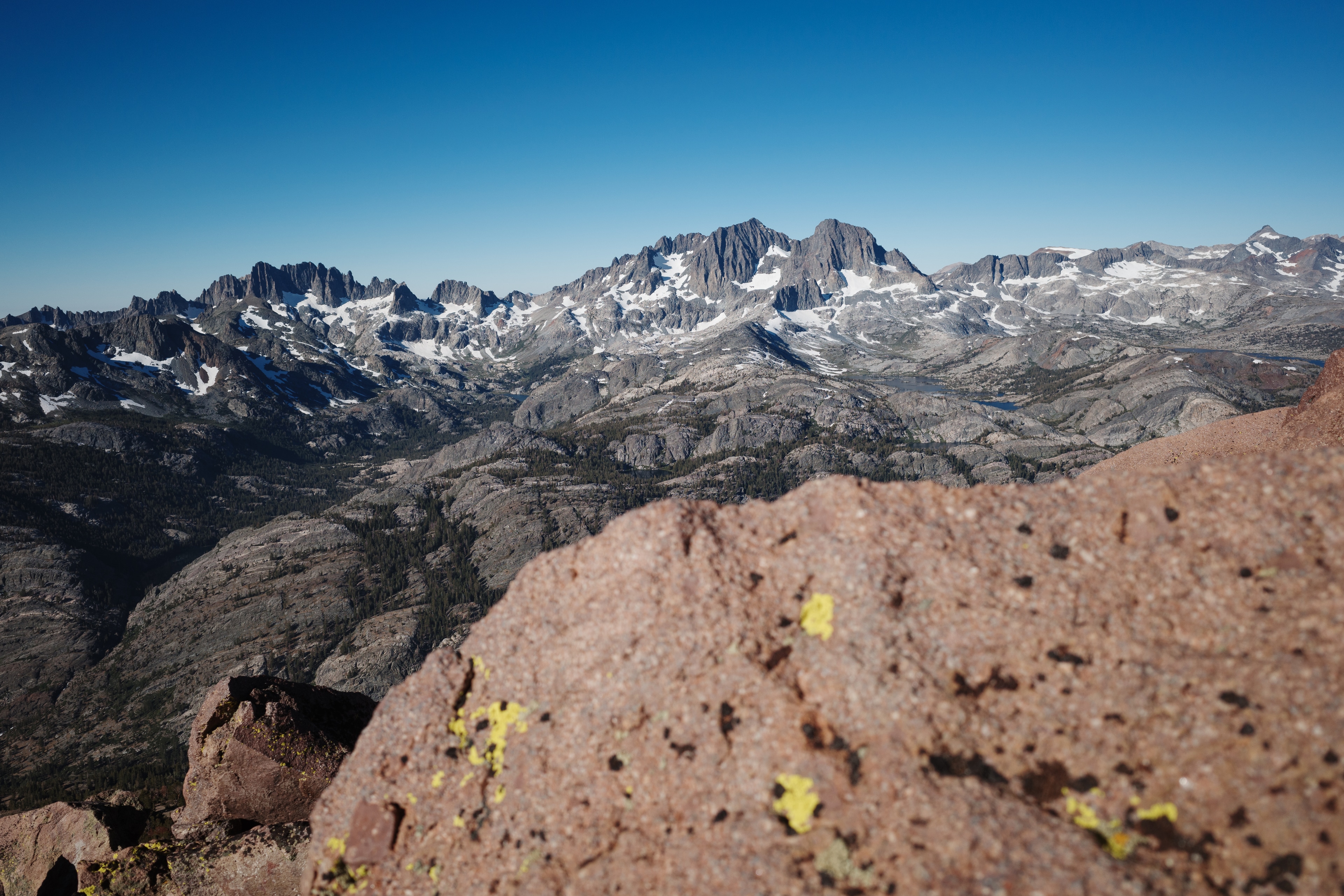
I’ve been on the summit of San Joaquin a handful of times. Once last fall, and a few times over the winter en route to the negatives or fern drainage. The views of the crest never get old.
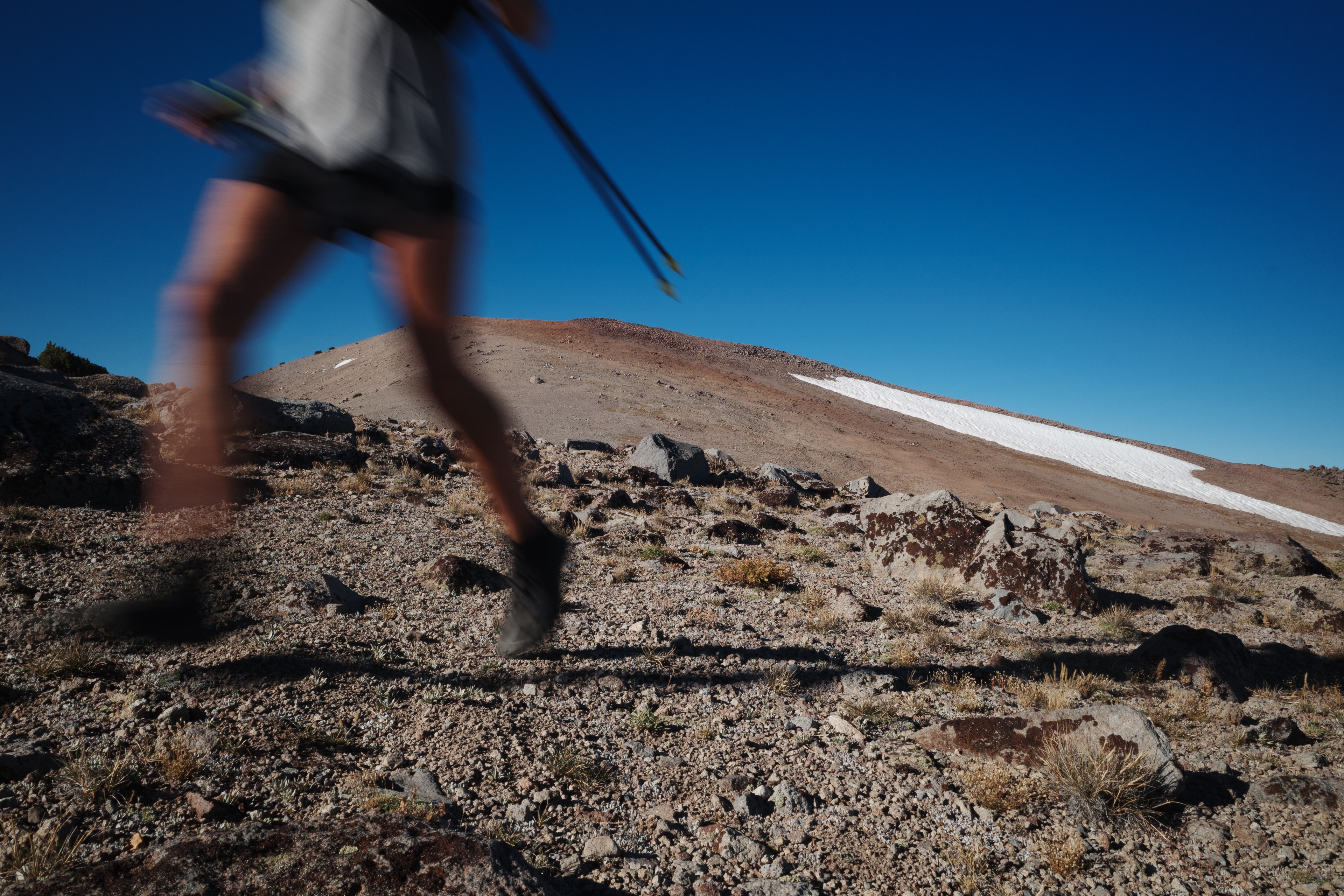
Ahead is Mammoth Mountain, where racers are a couple hours into the slog. The gentle rolling grade and smooth single-track trail affords kicking it into cruise control. For long stretches, the entire spine is pumice—no protruding tree roots or oversized rocks.
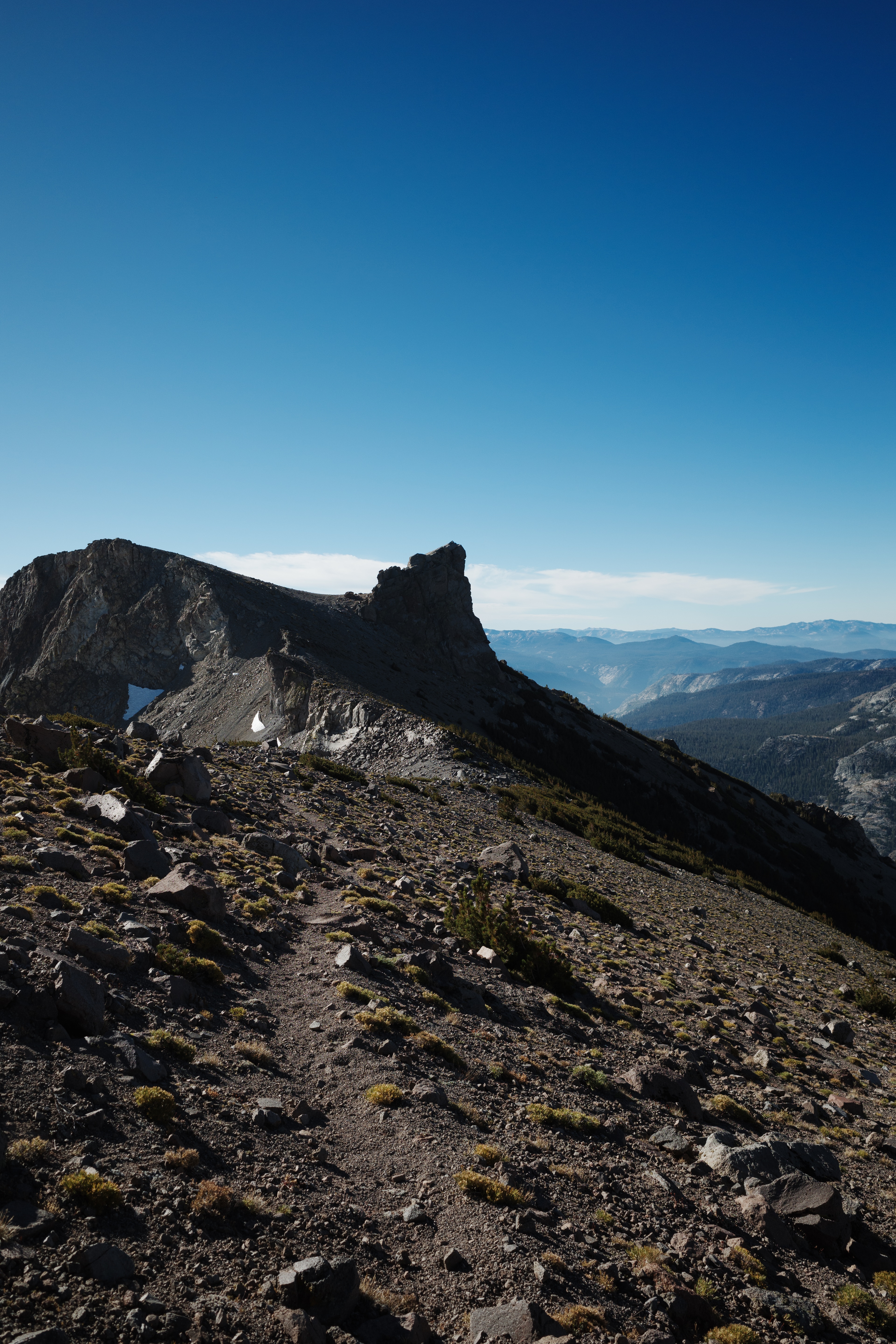
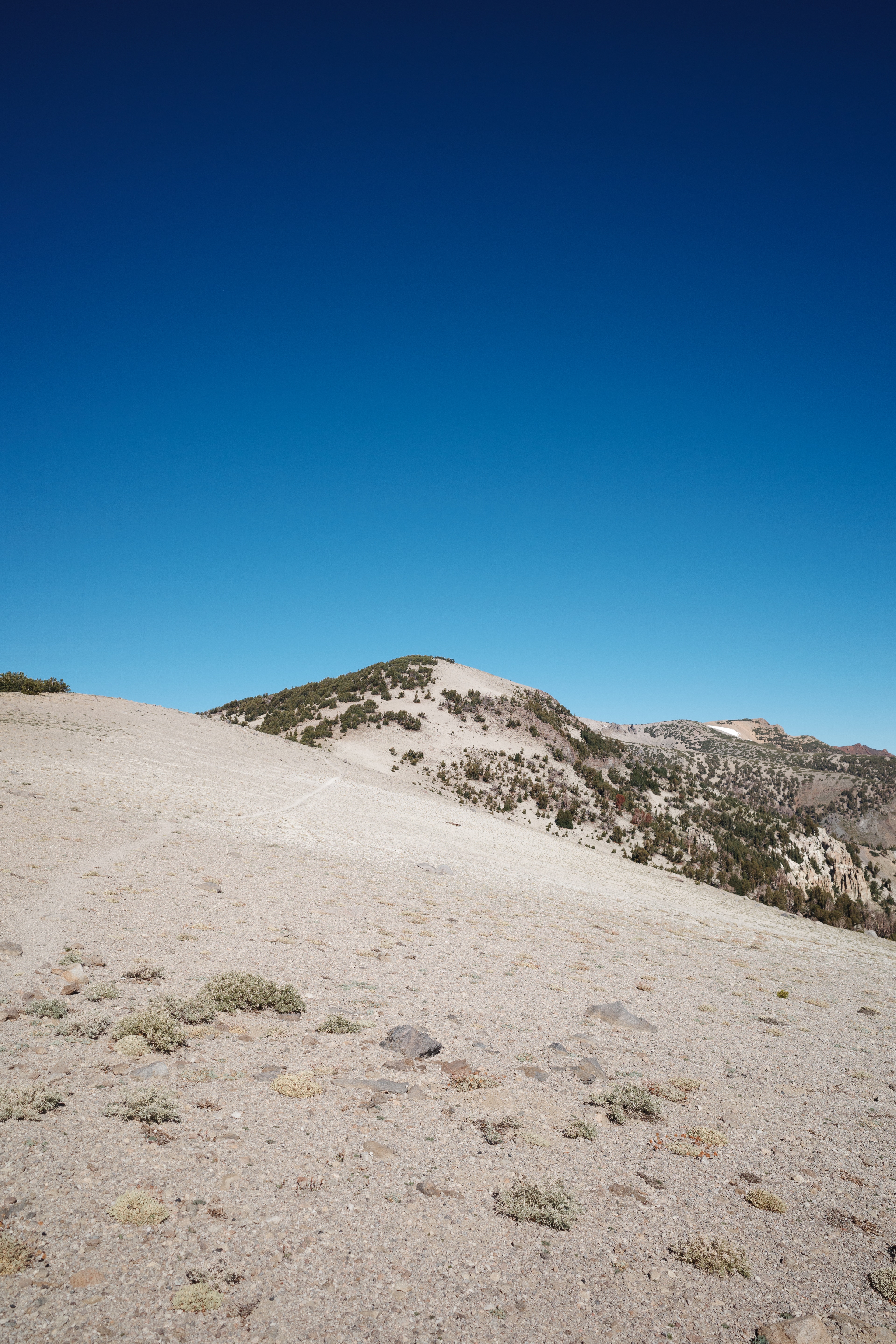
I have a favorite running technique that’s more perceptual than anything:
Stare at a single point on the horizon. Run towards it without breaking your gaze. It flattens the image and exaggerates the peripheral. You notice yourself moving through space. The up and down of each step. It’s like adopting the perspective of a Kubrick tracking shot.
I hop off the trail and into the Minaret Vista parking area. The finish line for the race is in the village, a few miles down the road. Standing along the side of the road, thumb up, a car passes, the passenger shaking her head of white hair under a bright red baseball cap “no” as it pulls into the turn out.
“You’ll have to share the backseat with my dog, Jackson!”
We commiserate about the winter—they live in Mammoth year round—and speculate about the upcoming season. “Back in our day, we did what you’re doing!”
I arrive at the village and eat a savory chicken pesto crepe. Too good. The ice cream shop doesn’t open until noon, so I’m sticking around at least until then. After about an hour, the first place finisher crosses the line. Over the next two hours I cheer a few friends along the finish line. A great time.
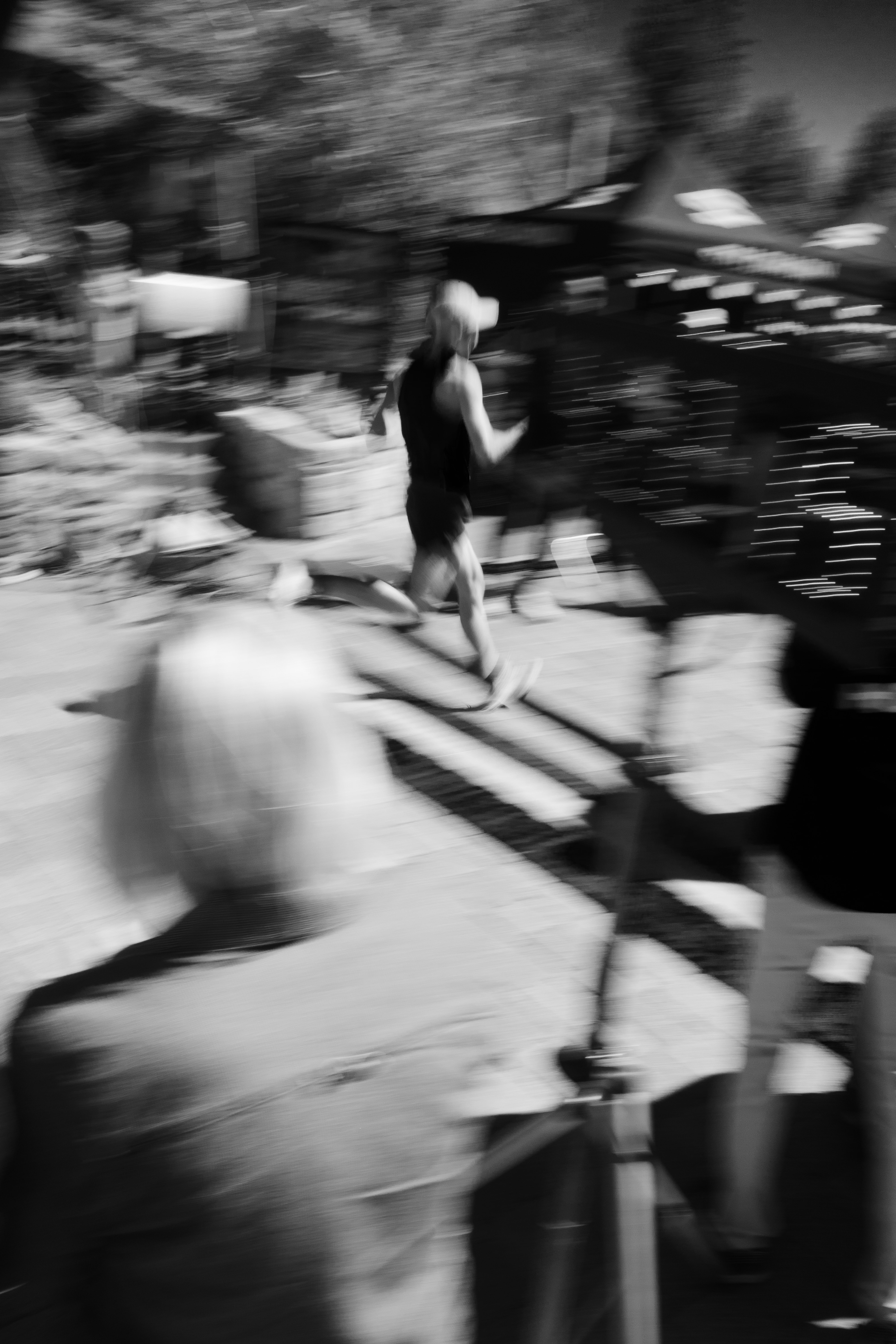
Ready to begin the second leg back to June, I post up at an intersection best positioned to catch a hitch back towards Minaret Vista. A few cars pass, then one stops. I hop in—unfortunately they’re heading towards the main lodge, about two miles short of where I want to go. But it’s better than nothing.
Catching a second hitch seems impossible. At least thirty cars pass—several of them with 395 stickers and four empty seats. What an offense! I’m being a big baby about it, and decide to run a trail leading to where I need to be. It turns out to be a great track—springy duffy stuff and shaded.
The descent towards Agnew Meadow campground begins. Looking back, this was likely the crux of the day. A couple miles on pavement going downhill. The road is extremely narrow—there isn’t a shoulder—and cars are trying to pass each other the entire time.
Arriving at Agnew I decide to hop on the Pacific Crest Trail. It stays a little higher up on the ridge, and has a milder grade than taking the Nüümü Poyo (John Muir Trail) below.
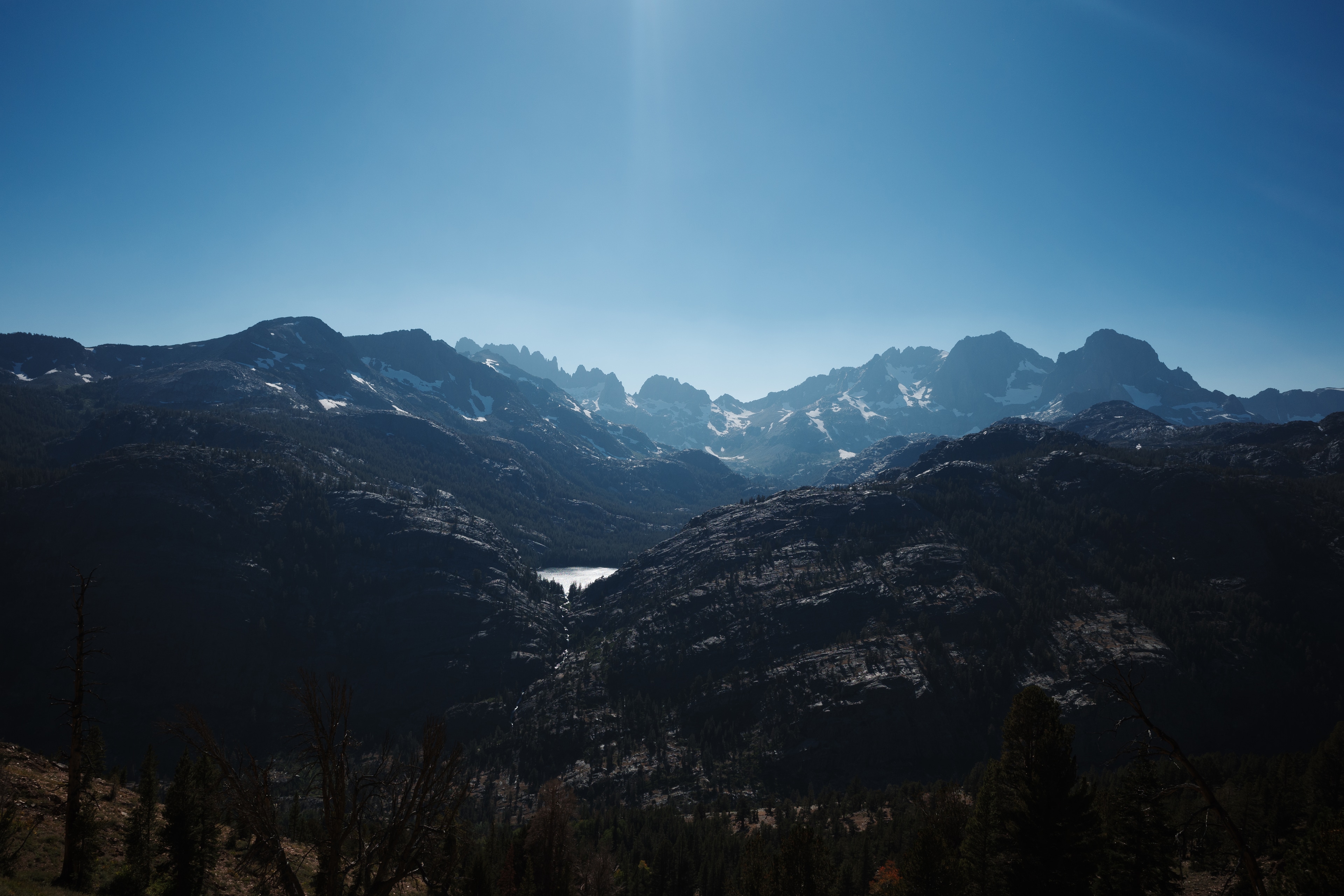
Ahead are a few people very obviously walking the full Pacific Crest Trail. It’s late in the season, and they skipped the Sierra earlier in the year due to the amount of snow travel. We small talk our respective experiences—I did it in 2019, also a big snow year—while filling up and cooling down with water.
Around this point I recognized the area I stopped for the night and threw the pad and quilt down for the evening in 2019. A little nostalgia.
The trail is really wet through here—running on wet rock and sticky mud is not it. I also haven’t been fueling enough—this is an area I need to prioritize. All of these variables together, I’m not making the fastest progress, but it’s a beautiful day out, and I’m not racing, after all.
The trail forks—one side goes to Canada along the PCT, the other towards Clark Lakes. Not needing to go to Canada on foot again any time soon, I head towards Clark Lakes. It doesn’t see much traffic, and is overgrown.
The slight haze in the air creates a pronounced sense of depth.
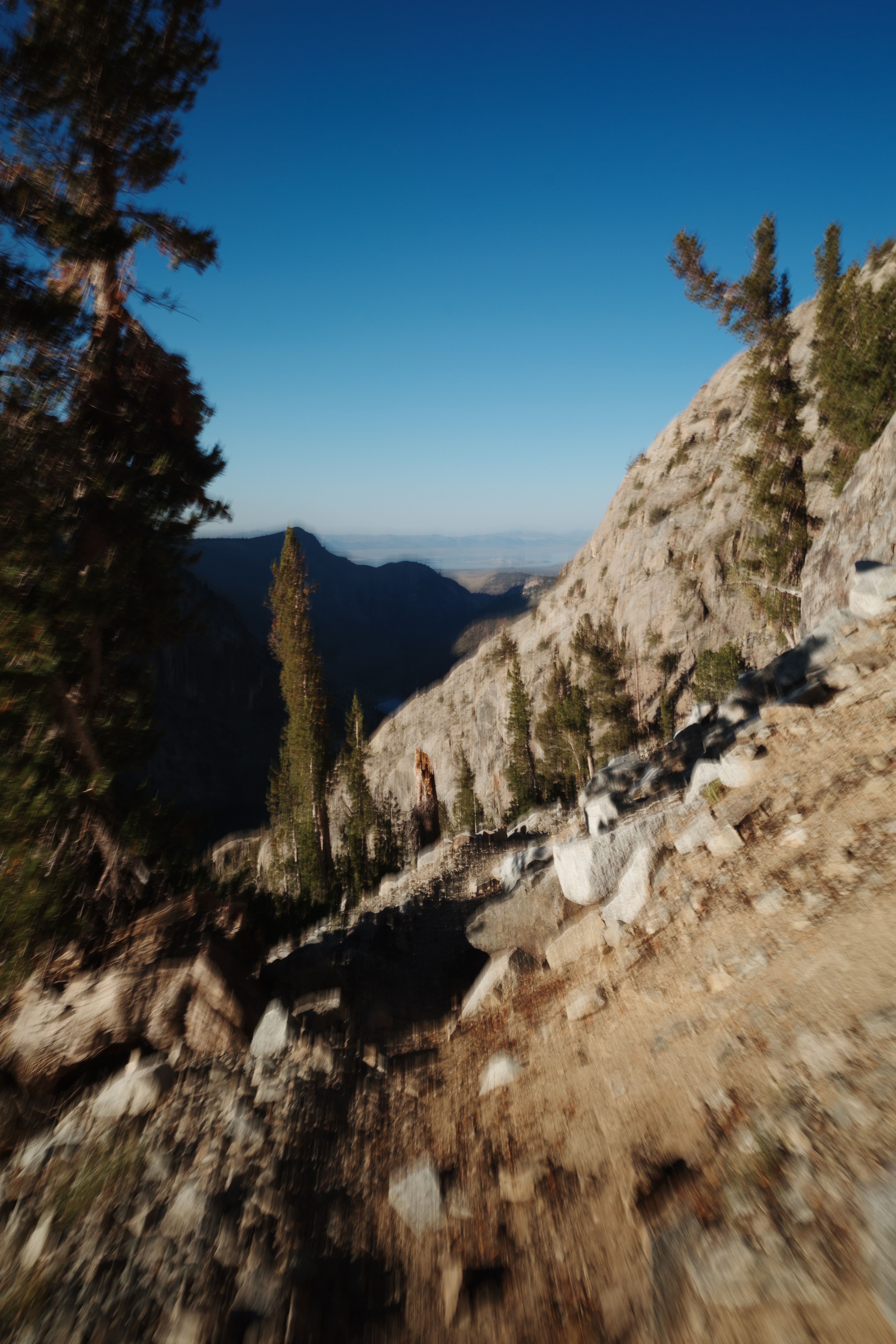
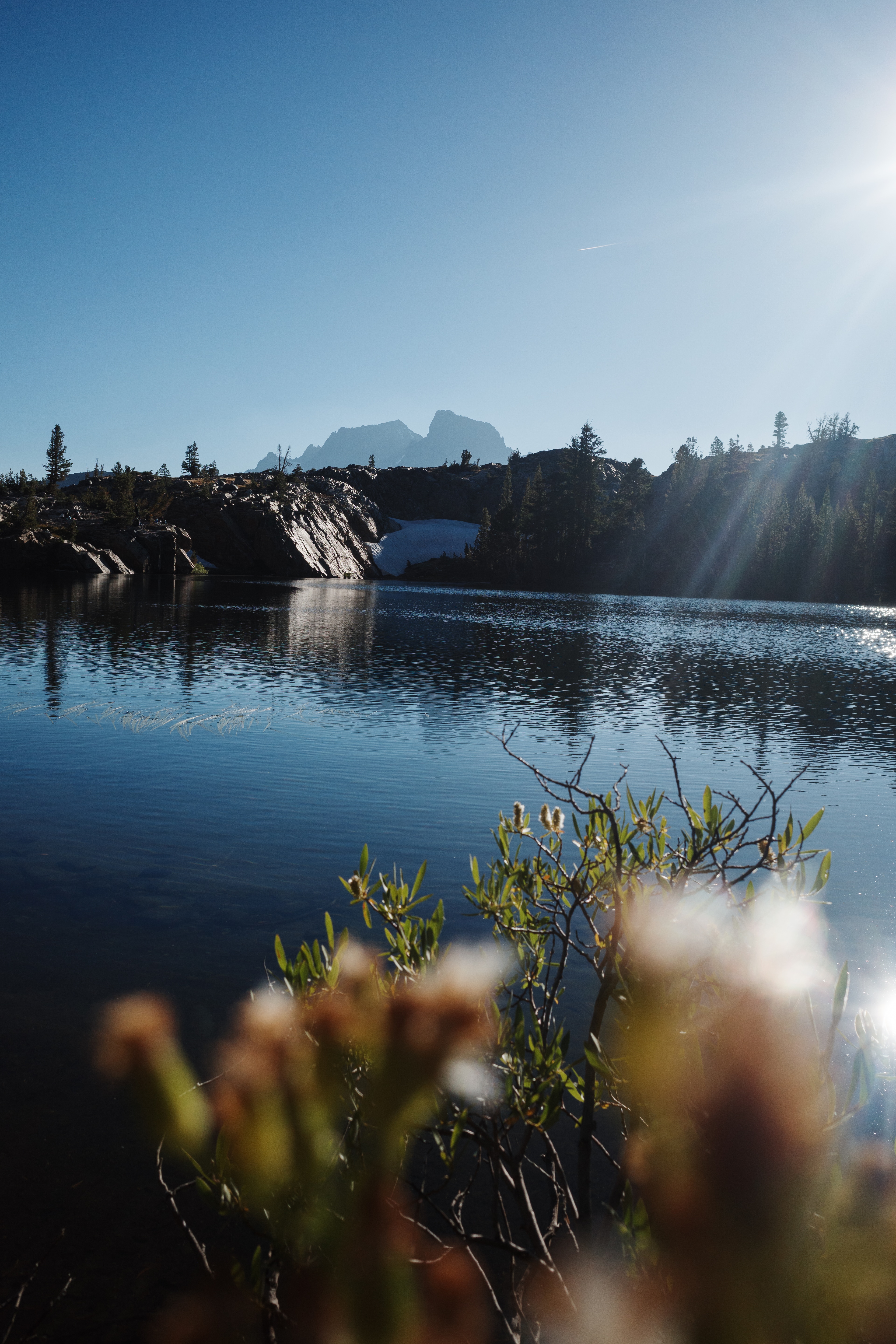
The 3,000 foot descent down Spooky Meadow towards Rush Creek passes quickly. A few months ago, when I was last up here, large snowfields covered most of the area. The exit through Rush Creek typically takes you out past Silver Lake—it’d add about three extra miles. Paralleling an old tramway2 built to service a number of high-elevation dams shaves it off.
Reaching the 158 next to Rush Creek, there’s a decision; take the road, or cruise another paralleling trail that undulates up and down frequently. After about sixteen miles of loose trail some solid steps sound refreshing.
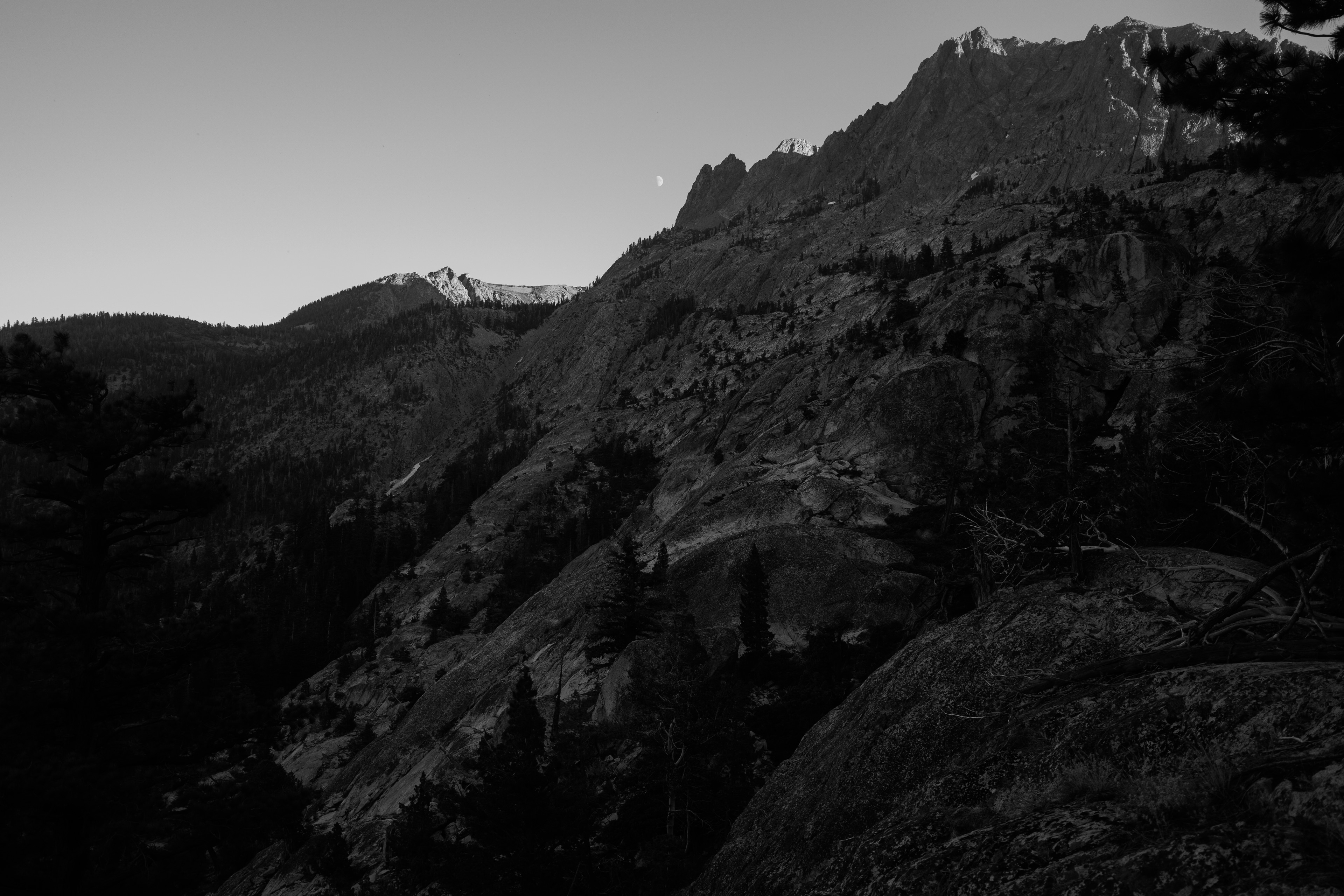
The remaining miles pass quickly, and I’m soon turning off onto my street, heading up the stairs, and sitting back on the couch. Another good one. Congratulations to all who participated in the trail fest, and I hope to actually make it next year!
As for the car, it seems every mechanic is booked out at least a month on the east side. We’ll see what happens.
https://publications.americanalpineclub.org/articles/13201214503/Robert-John-Secor-1956-2017 ↩
Here’s an endearing and quirky documentary about the history of the tram. ↩